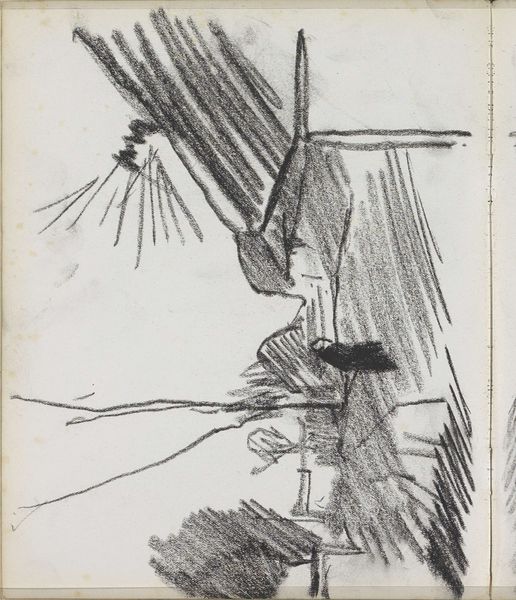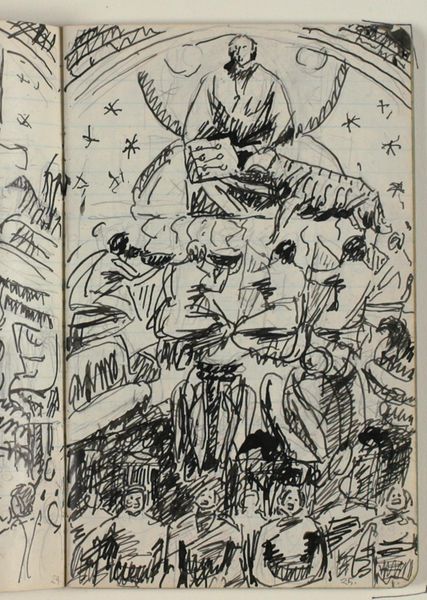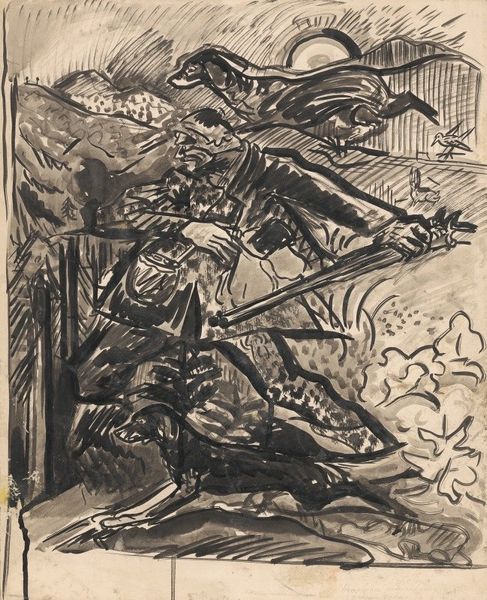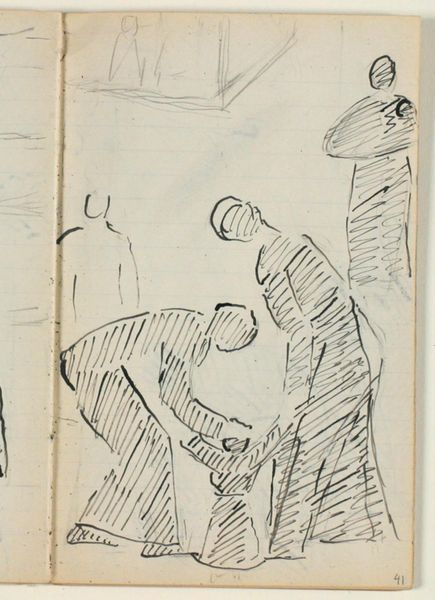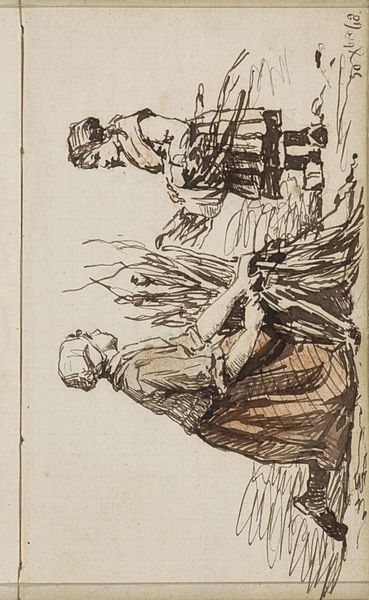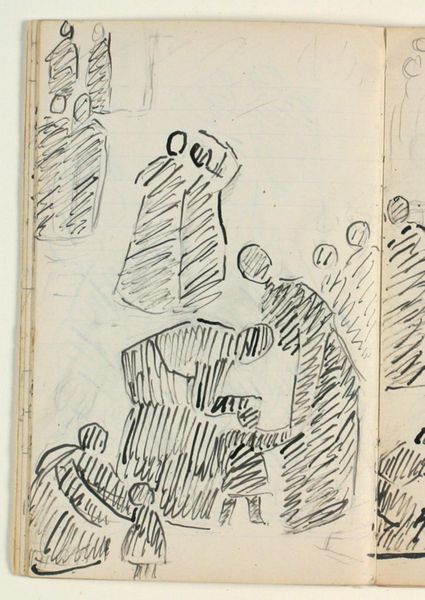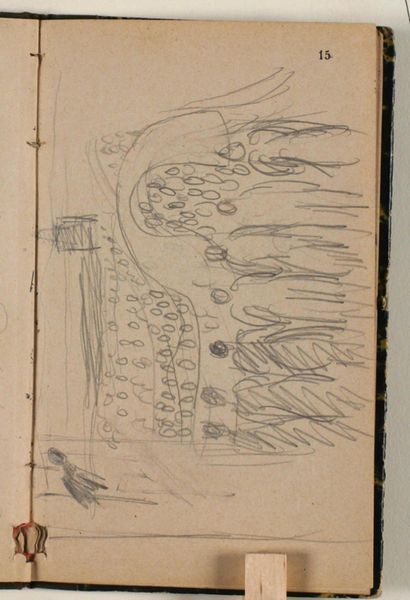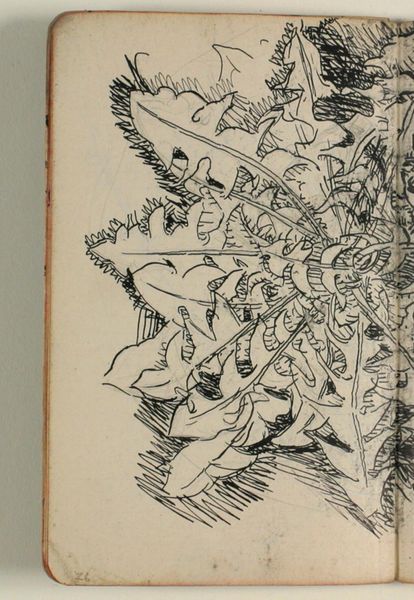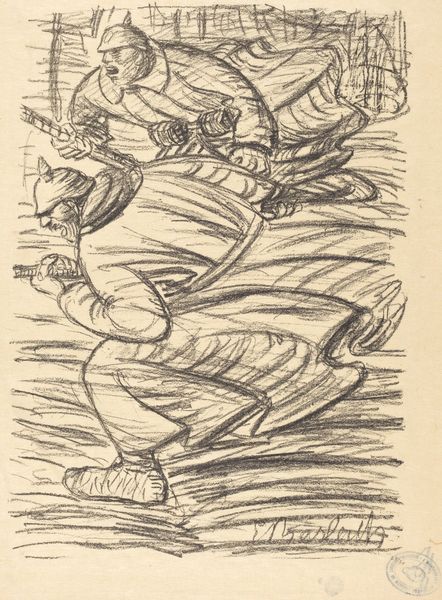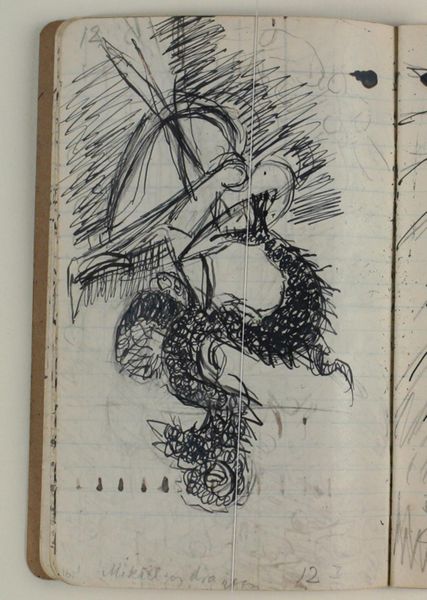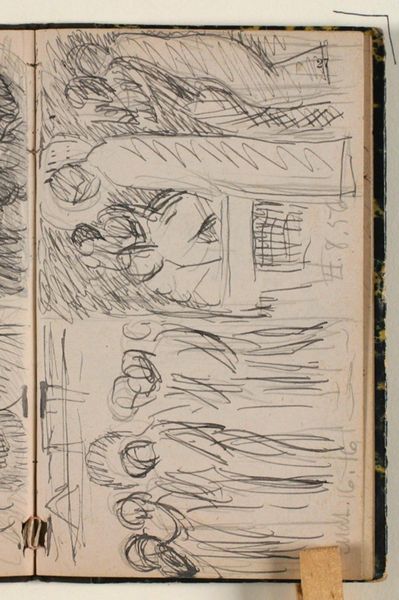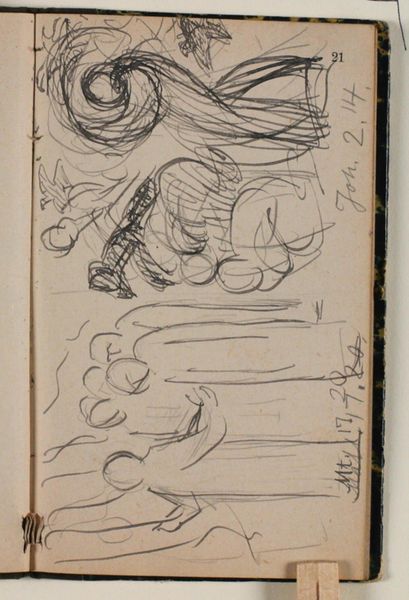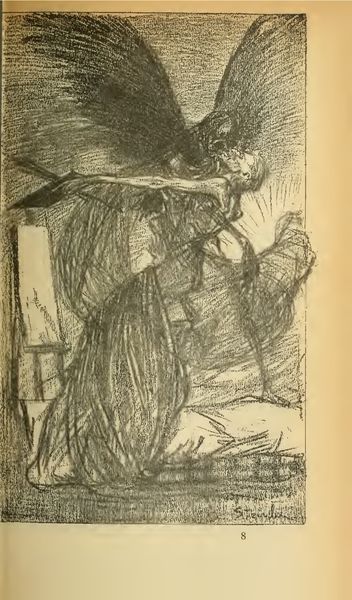
Kompositionsudkast til Blichers novelle "Bettefanden", p. 125 - Krushoved ved Bettefandens hus 1932 - 1935
0:00
0:00
Curator: Let's turn our attention to this intriguing sketch by Niels Larsen Stevns from between 1932 and 1935. It is entitled "Kompositionsudkast til Blichers novelle 'Bettefanden', p. 125 - Krushoved ved Bettefandens hus." Editor: My first impression is… chaotic. The energy! It’s almost aggressively raw, like the artist was wrestling with a vision he had to get down immediately. What medium did he use? Curator: It is executed in ink. Note the quick, expressive strokes, especially around what appears to be a figure outside the building. He’s primarily concerned with capturing the essence of a moment, less so with fine detail. Editor: It gives the building a really claustrophobic feel, almost as though its oppressive nature has leached onto the figure—making it shrink in the surrounding. I wonder, what symbolic weight the artist attributes to the building itself, rendering the architectural and natural forms of this structure in the tale? Curator: Interesting you mention the architecture, because the house itself appears central here, and Stevns is directly referencing a story. The drawing is specifically linked to Steen Steensen Blicher's story "Bettefanden.” Given the historical context and Blicher’s critiques of societal pressures, one might see the house, with Stevns’ interpretation, as symbolizing both a refuge and a trap, a stage for the unfolding human dramas. Editor: Yes, the more I observe, the figure hunched beside the building appears to serve a kind of visual metaphor, a cipher really. His position emphasizes his submissive and dejected state, highlighting that internal feeling. In rendering Krushoved's pose, the composition highlights how internal feeling can take form and become something real to observers as a cultural, emotional, and physical reaction. Curator: Stevns wasn’t merely illustrating, then; he was offering his interpretation through this medium of ink and paper, highlighting those stark realities that affected laborers and those deemed different. He shows us how such stories carry a lasting cultural weight, in Stevns' day and even now. Editor: Well, considering all that, it does make this simple sketch incredibly poignant. The materials and composition certainly convey far more than just the basic narrative elements. Curator: Agreed. Exploring Stevns' compositional methods using ink brings us a fresh perspective on the visual language of his era, doesn’t it?
Comments
No comments
Be the first to comment and join the conversation on the ultimate creative platform.
